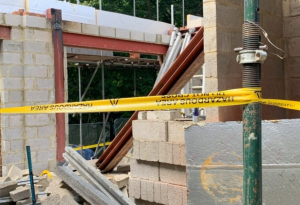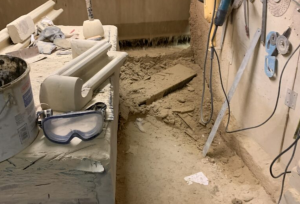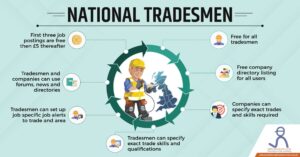New Apprenticeships levy 700 contractors to pay extra 0.5%
This post has already been read 3566 times!
The chancellor Mr Osborne, addressing the Commons announced that from April 2017 businesses will contribute 0.5% of their total wage bill towards paying for on-the-job training but only for those with a wage bill of more than £3,000,000.
A £15,000 allowance for employers will mean the levy will only be paid on employers’ pay bills over £3 million, so fewer than 2% of UK employers will pay it.
It is estimated that the new levy will raise £3 billion each year to go towards the training of new Apprentices and construction workers. This continued effort forms part of Governments plans to create three million extra apprenticeships by 2020 and put an end to Britain’s skills shortage in all industries.
In addition, it was revealed that Business Secretary Sajid Javid, will set up a new body led by businesses to ensure all on-the-job training programmes are of the highest standards.
KEY POINTS ON THE LEVY
- Employers will receive an allowance of £15,000. The effect of this allowance is that the levy will only be payable on a pay bill in excess of £3,000,000 employers with a pay bill less than £3,000,000 will not pay anything.
- The levy will be paid through Pay As You Earn and be deducted on a monthly basis.
- Contractors will be able to reclaim the money via a new digital voucher system.
- Contractors in England who pay the levy and are committed to apprenticeship training will be able to get out more than they pay into the levy, through a top-up to their digital accounts.
- While SMEs will be exempt from the apprenticeship levy, there are currently no details as to whether vouchers could be passed on in the supply-chain or from larger employers directly to SMEs.
- The government will establish a new employer-led body to set apprenticeship standards and ensure quality. The body will be independent of government and will also advise on the level of levy funding each apprenticeship should receive.
The CITB also sets it current charge at 0.5% but levy kicks in at a much lower payroll threshold of £80,000. It also bolts on extra charges based on the number of labour-only subcontractors a big firm uses.
On the flip side many large and major contractors have already publicly said they simply will not pay two parallel levies for training. This could cut the CITB’s £160m annual fees collected ted by the levy to a point where it will need to review how it operates with some already questioning CITB fees .
James Wates, Chairman of the CITB, commented saying: “While the announcement regarding the Apprenticeship Levy creates a challenging environment for CITB across Great Britain, we will continue to support industry and work with government to ensure the best possible outcome.
“Our next step is to engage in extensive consultation with employers and work out the most effective way to continue providing the construction industry with the skills and training it needs.”
Suzannah Nichol, chief executive of contractors trade body UK Build, said: “We are meeting skills minister Nick Boles in a few weeks to talk through how this will work.
“They key thing is the new levy must work for industry because we desperately need skills to deliver capacity in a growing industry.”
With around 60% of apprenticeships being delivered by small and micro firms the CITB is hoping, major players paying apprenticeship levy will agree to top up its income to main the present training system.
Steve Radley, head of policy at the CITB, said: “The Government is very clear that it is for the industry to decide what role the CITB has going forward.
“Clearly there is a lot of work needed to be done to determine how to fulfil the industry’s wider skills needs.
There were also measures laid out in the autumn statement aimed at encouraging housebuilding, including the decision to double the housing budget to more than £2bn a year as higlighted by Nationaltradesmen in this post Housebuilders extra £4 billion in budget.
It is hoped that increasing funding levels will help developers to provide 400,000 affordable homes over the next five years.
Reforms to the planning system will see public land released for 160,000 homes and unused commercial land earmarked for starter homes, while loans will be extended for small builders.
Mr Osborne maintained his commitment to funding major transport projects as he increased capital spending in the sector to levels unseen for a generation.
He said that construction of the High Speed 2 rail line could now get under way, while electrification schemes such as the Great Western route from London to South Wales could continue.
Declaring that “we are the builders”, Mr Osborne said that transport spending will see the biggest increase since the 1970s, going up 50% to £61 million.























